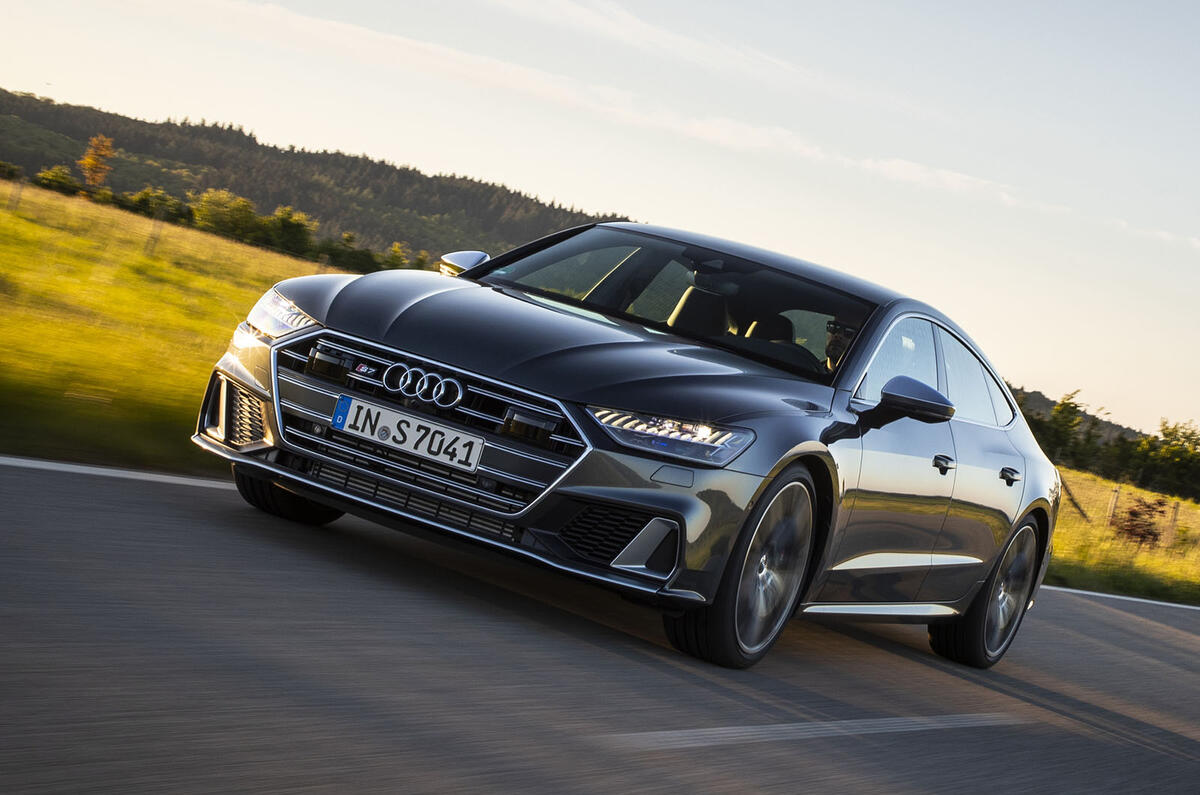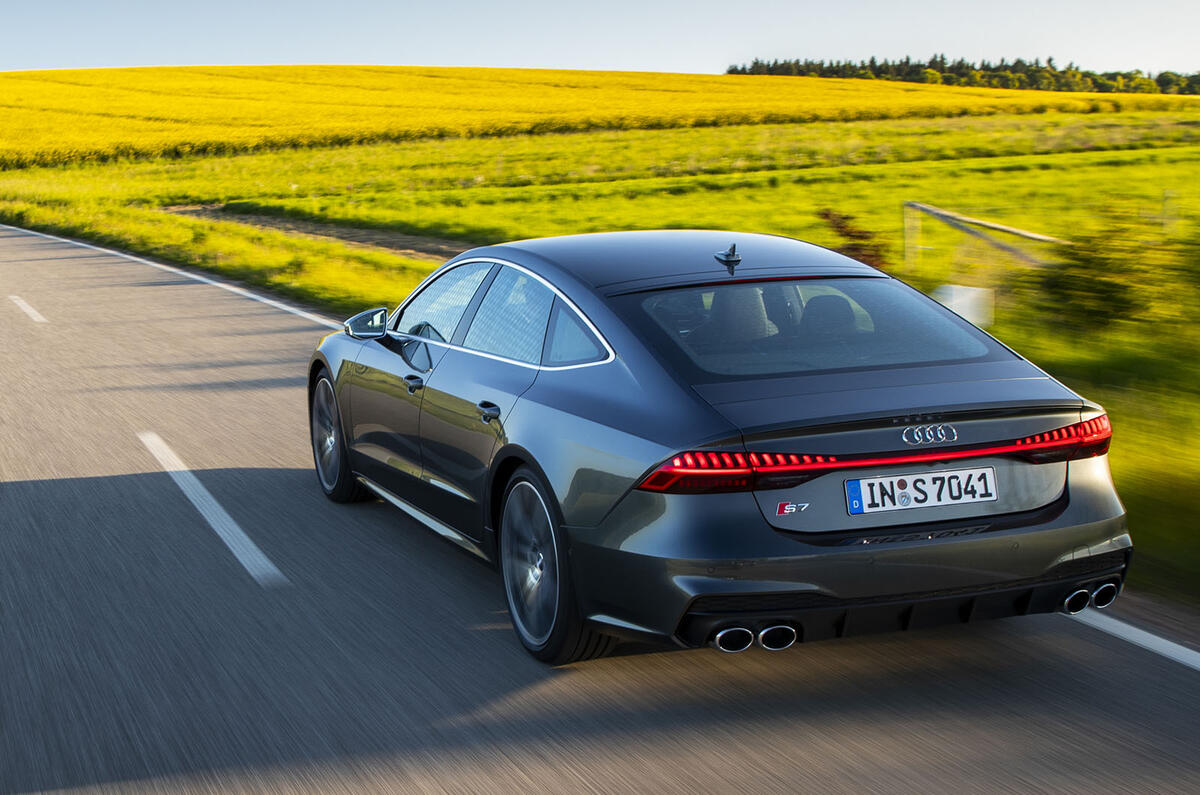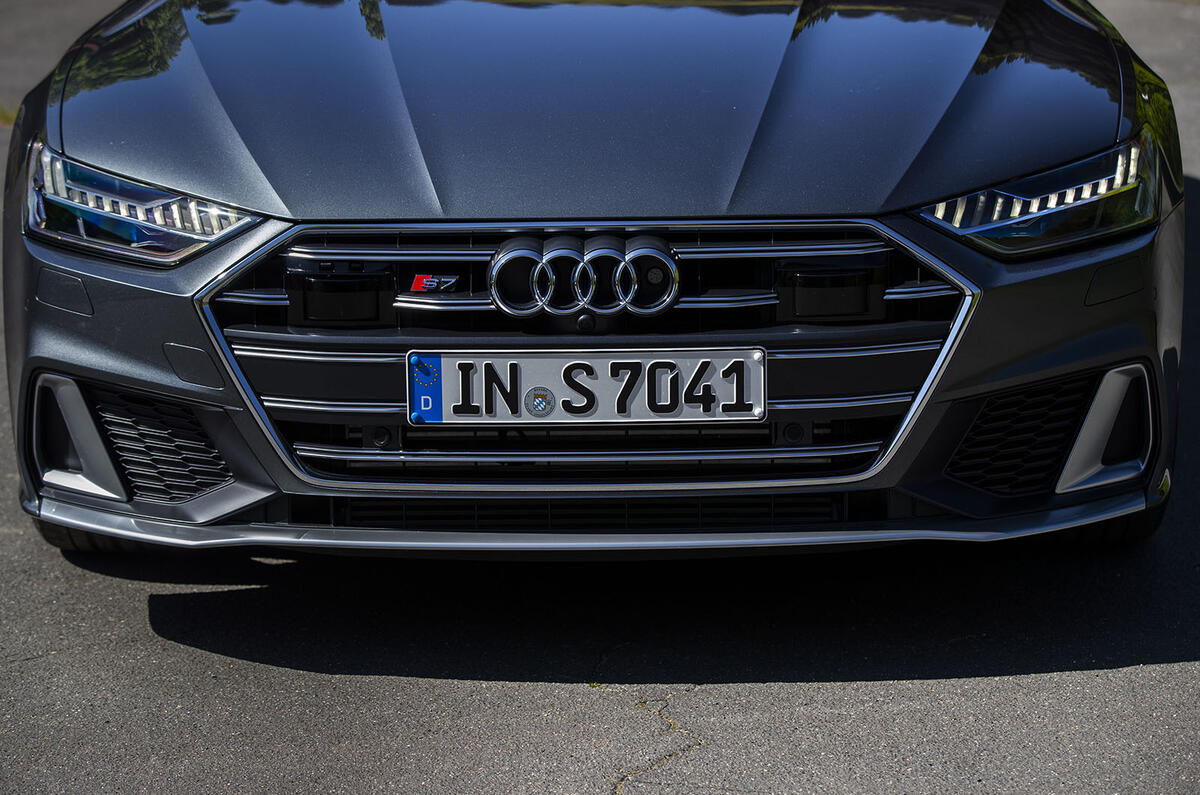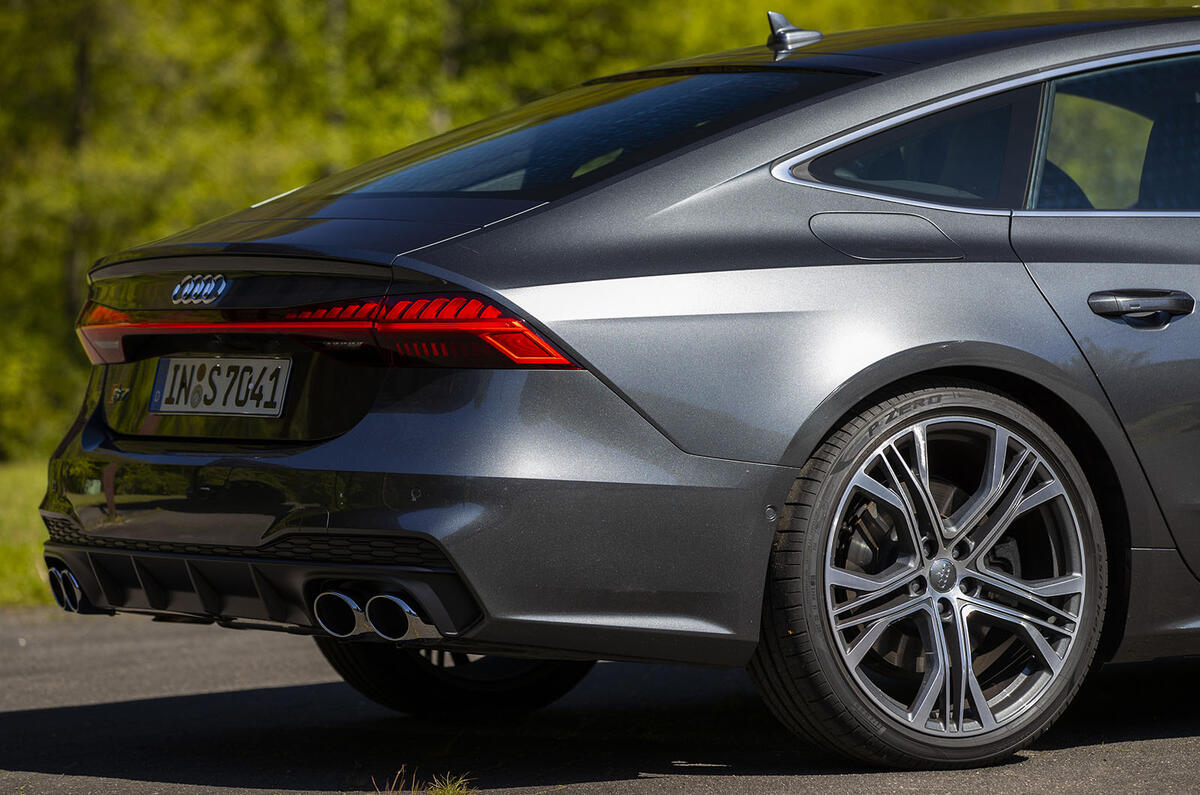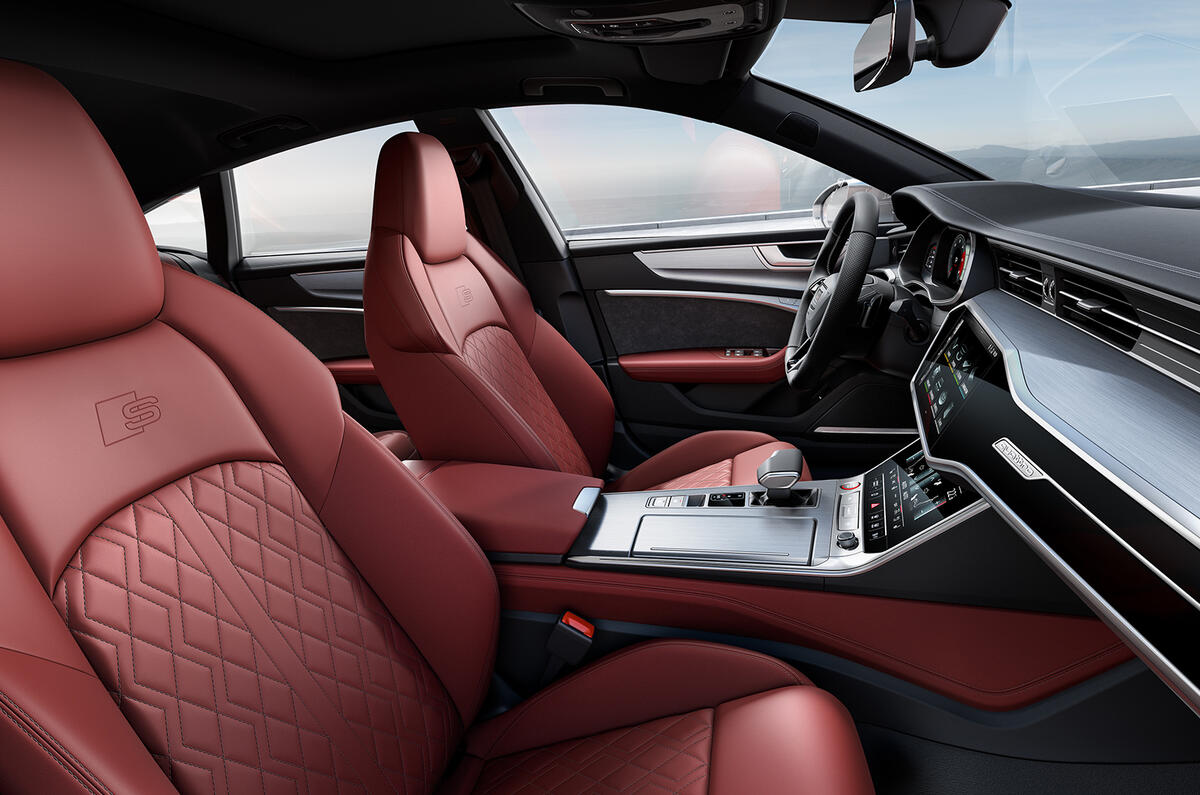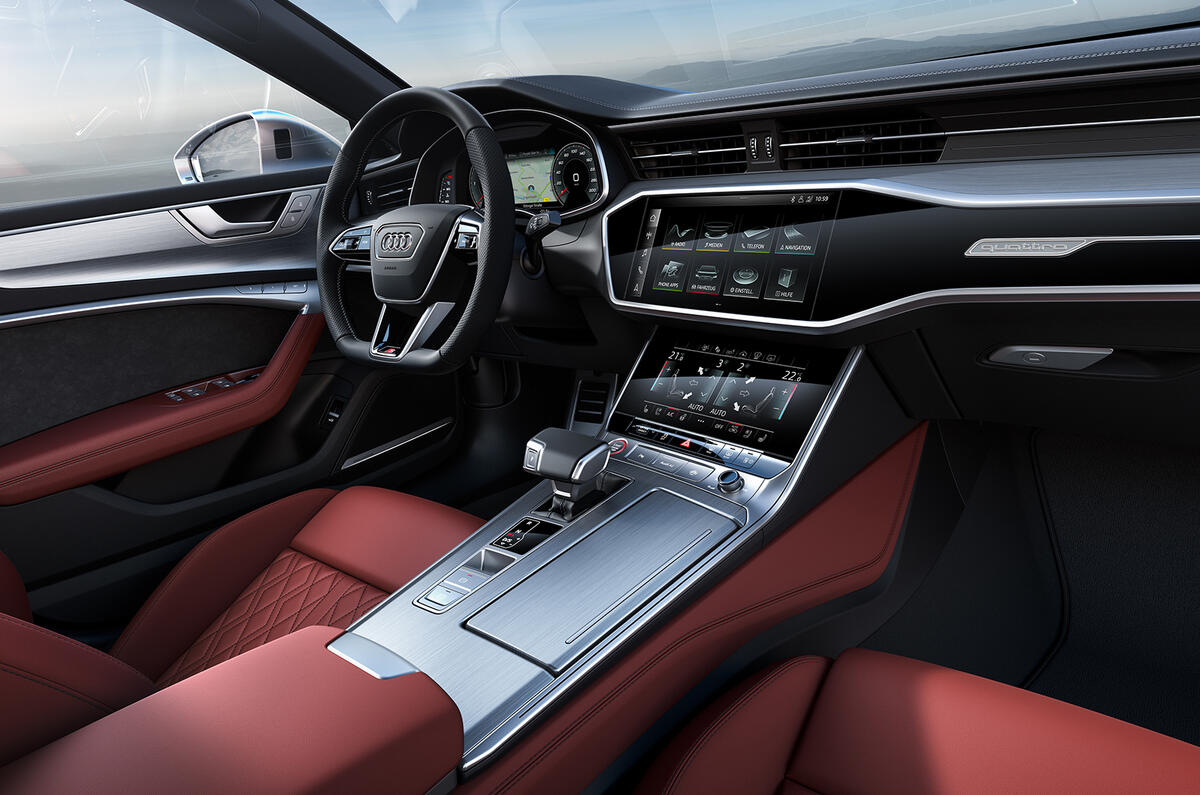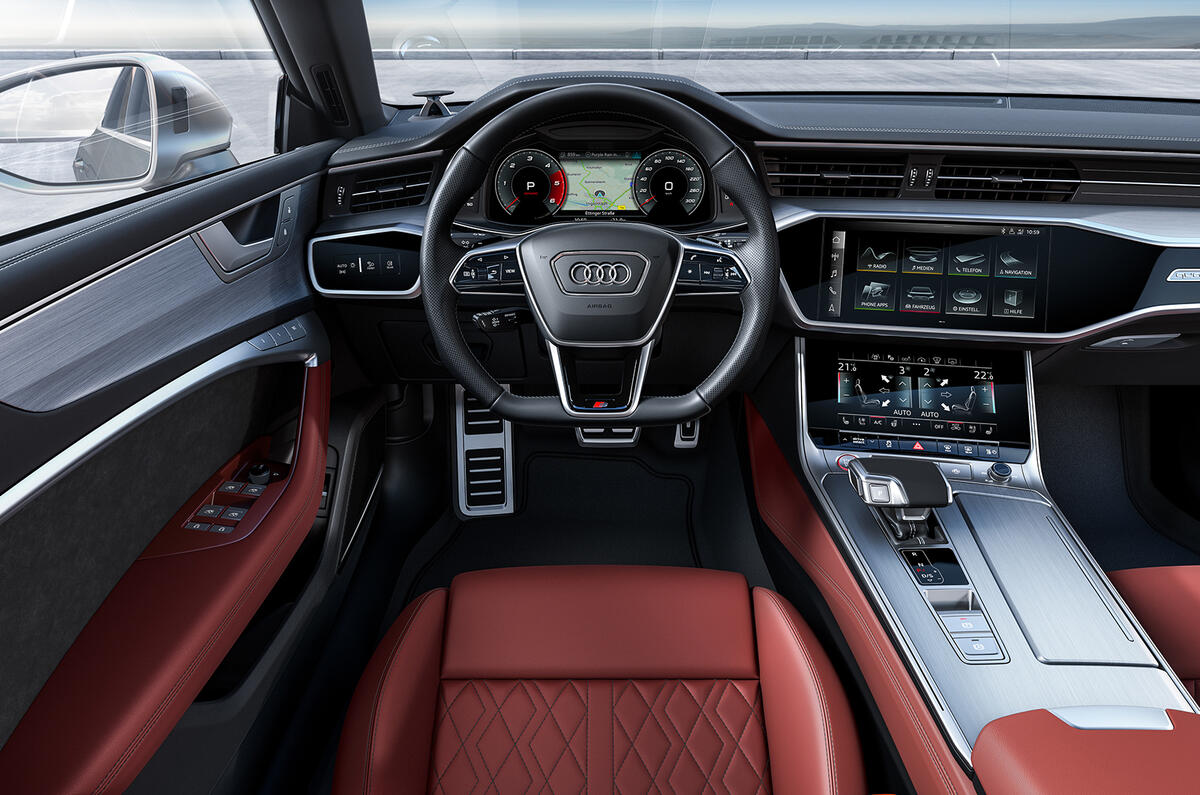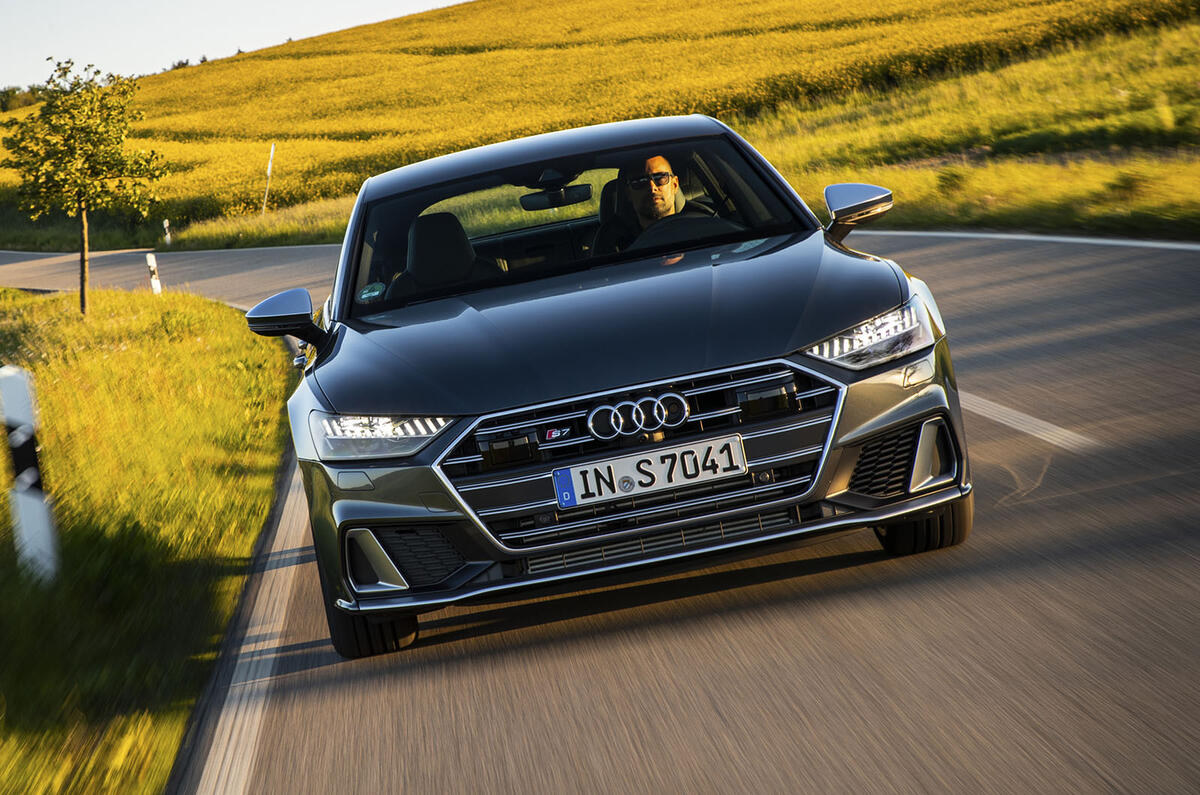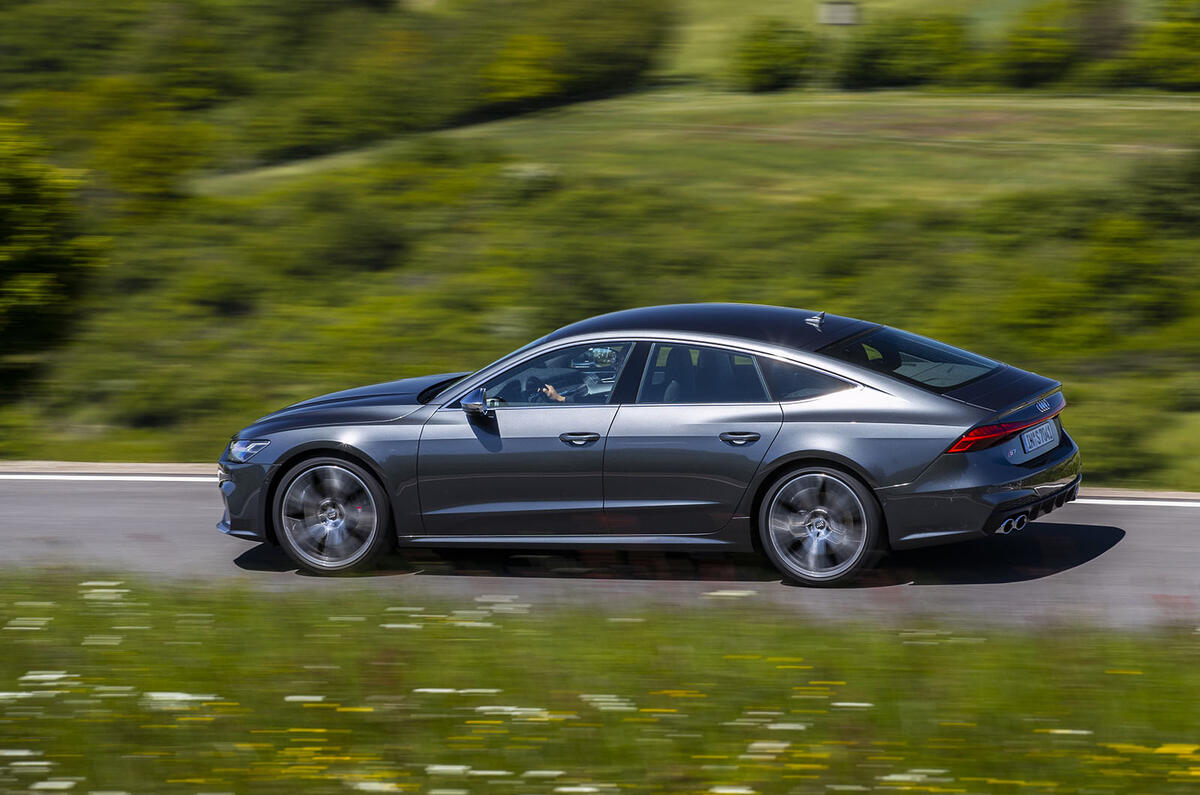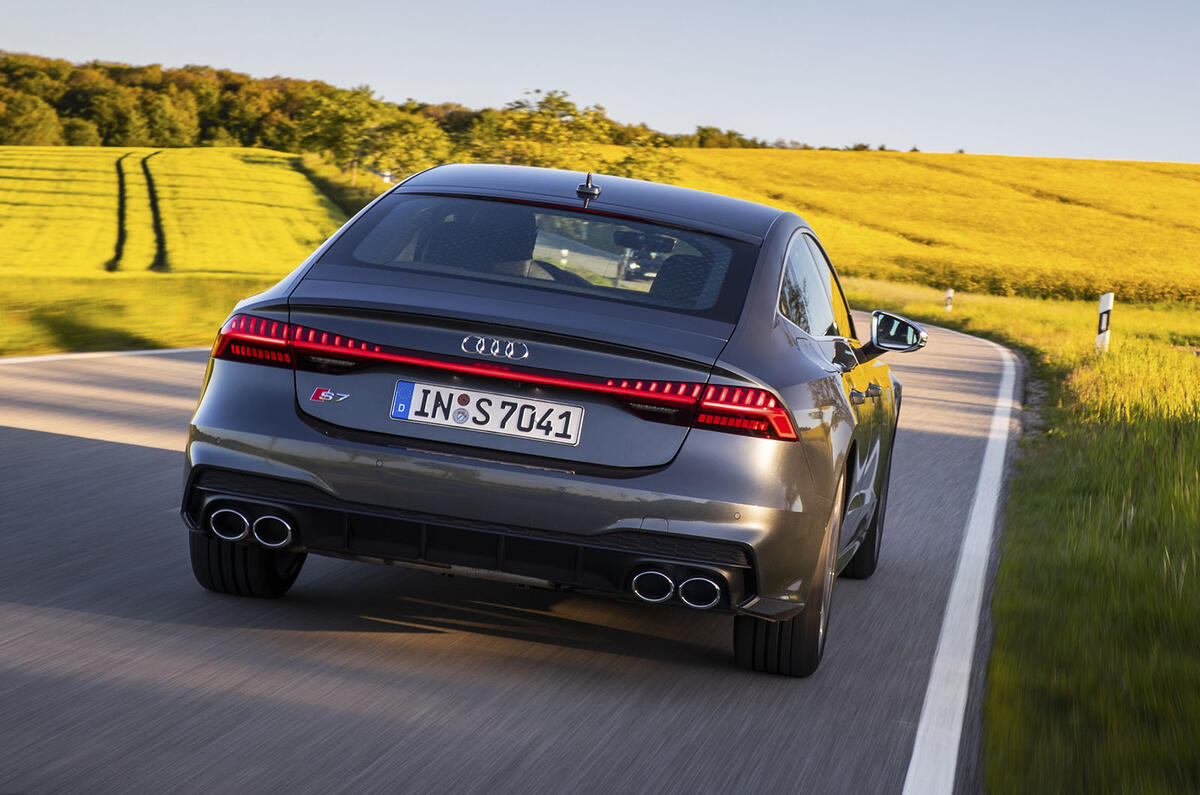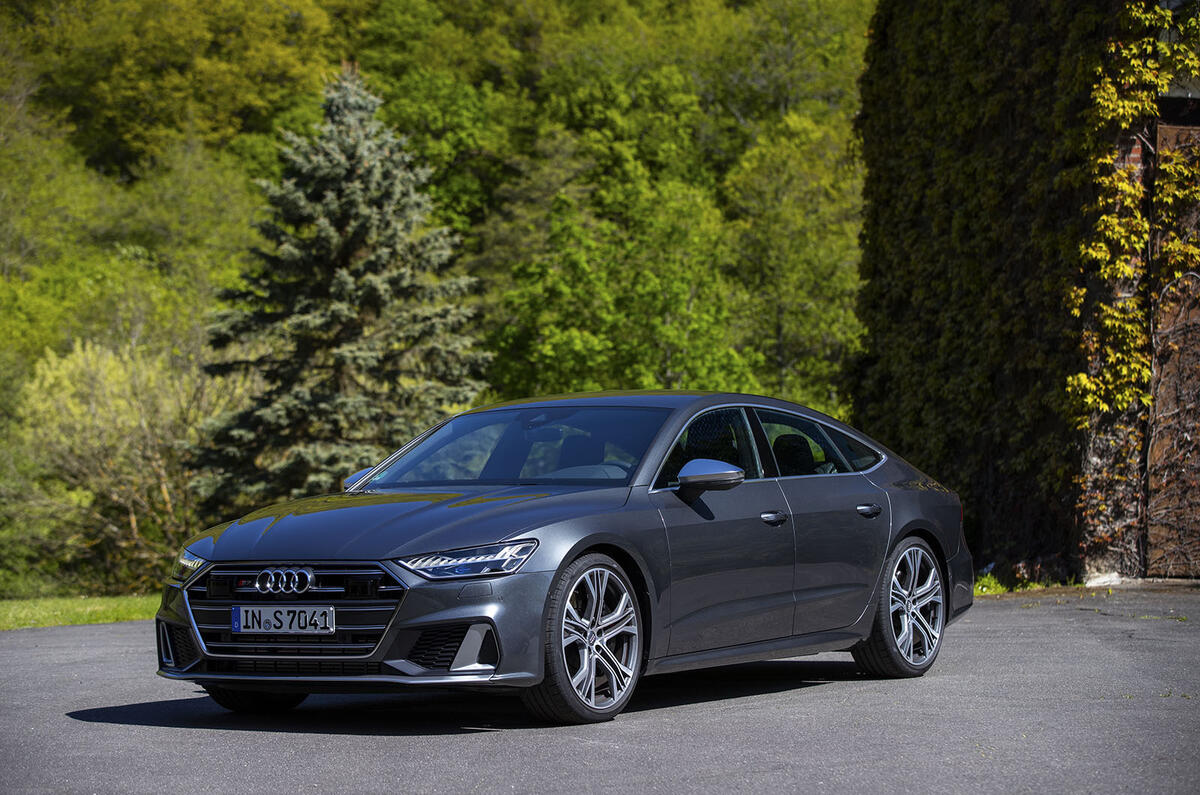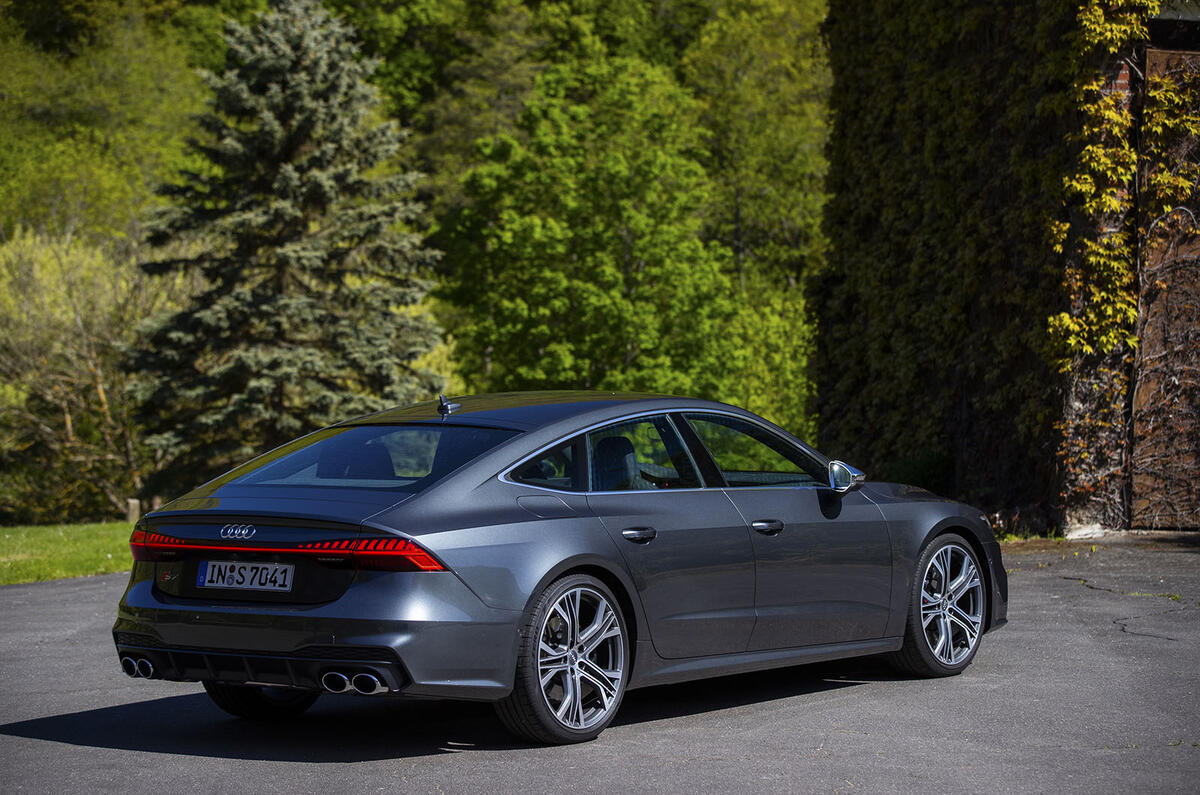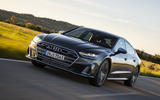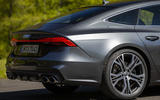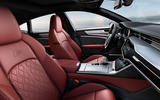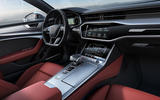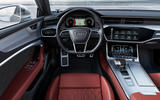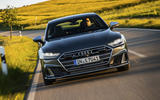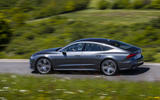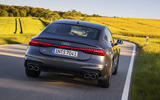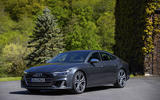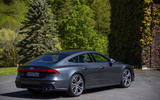Sounds a bit crude for such a good-looking car, but what we have here, mechanically speaking, is the closest product possible to the Audi S6 – also launched this week – without masking it the same.
The S7 has the same chassis and running gear, the same ingenious, clean and powerful mild-hybrid diesel powerplant and much the same dimensions. In fact, if you were looking for a pair of cars to illustrate how car makers can make two distinct models using the same ‘stuff’, this pair of Audis would fill the bill.
This Sportback is a rakish five-door, a little lower and a little heavier than the S6 four-door but deemed special enough to command an entry price of around £8000 to the good. See the two cars together – as we did on test near Wiesbaden, Germany – and it’s not hard to appreciate the reason for that price disparity: the lower and more graceful S7, with its slightly more confined accommodation, is arguably the best-looking car Audi makes, and looks instantly exotic enough to command a higher price. So it does.
Along with the S6 and SQ5, it commits Audi to a new 48V hybrid 3.0-litre diesel V6 as motive power for its high-performance versions of the A6, an odd-looking move when diesels are declining in popularity, especially in the UK, and no one’s very optimistic about a recovery.
The new set-up consists of a north-south, nose-mounted 3.0-litre V6 equipped with a 48V electrically driven compressor, whose airflow keeps the turbocharger spinning fast to cut spool-up time and reduce accelerator lag. It also incorporates a 48V belt-driven integrated starter-generator that contributes under acceleration to a peak power output of 344bhp and a best torque figure of 516lb ft. Coasting or on the overrun the ISG collects power in a 10Ah battery for later use in acceleration.


